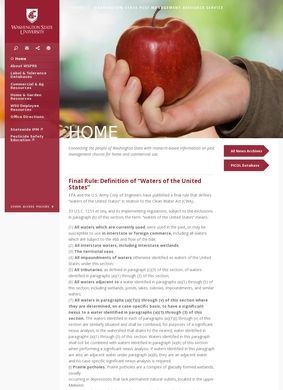The Washington State Pest Management Resource Service is a program managed by the Washington State University. The program is creatively designed to offer comprehensive resources to both commercial and domestic entities, addressing every possible aspect of pest management. The unique services offered cater to a diverse range of clients including agricultural entities, home gardens, and Washington State University employees.
The resource service also provides statewide Integrated Pest Management (IPM) support, emphasizing the safe application of pesticides. Pesticide Safety Education appears to be an integral part of their program, raising awareness about the risk and techniques related to pesticide use. One can infer that this focus on safety demonstrates the program's commitment to ensuring that pest management activities are undertaken responsibly and safely.
Label and Tolerance Databases are additional features provided by the service. These databases are intended to provide valuable and up-to-date information on pest management. It underscores the resource service's goal to equip its users with the necessary information to effectively manage pests, highlighting the program's information-centric approach.
However, an aspect of the service requiring attention is its website's accessibility. There seems to be an issue with website navigation as certain pages could not be located. It could be due to incorrect URL input or perhaps the page in question has been moved. This may pose a hindrance for the users, impeding the smooth access to necessary resources.
Despite this, the site offers a variety of interactive features such as social media integration, evidenced by its links to Facebook, Twitter, and YouTube. This extends the platform's reach, making it possible for users to connect beyond the website itself.
Moreover, unique office directions and university extensions indicate a level of personalization offered by the service. This further enhances the user experience by fostering seamless communication between the users and the program operators.
In conclusion, the Washington State Pest Management Resource Service, animated by Washington State University, incorporates an extensive array of features and resources catering to a broad clientele. The emphasis on safety education and real-time information is commendable. However, the service could benefit from refining the website's accessibility for providing an unobstructed user experience. With minor improvements, the program can be an all-inclusive go-to resource for diverse pest management needs.
